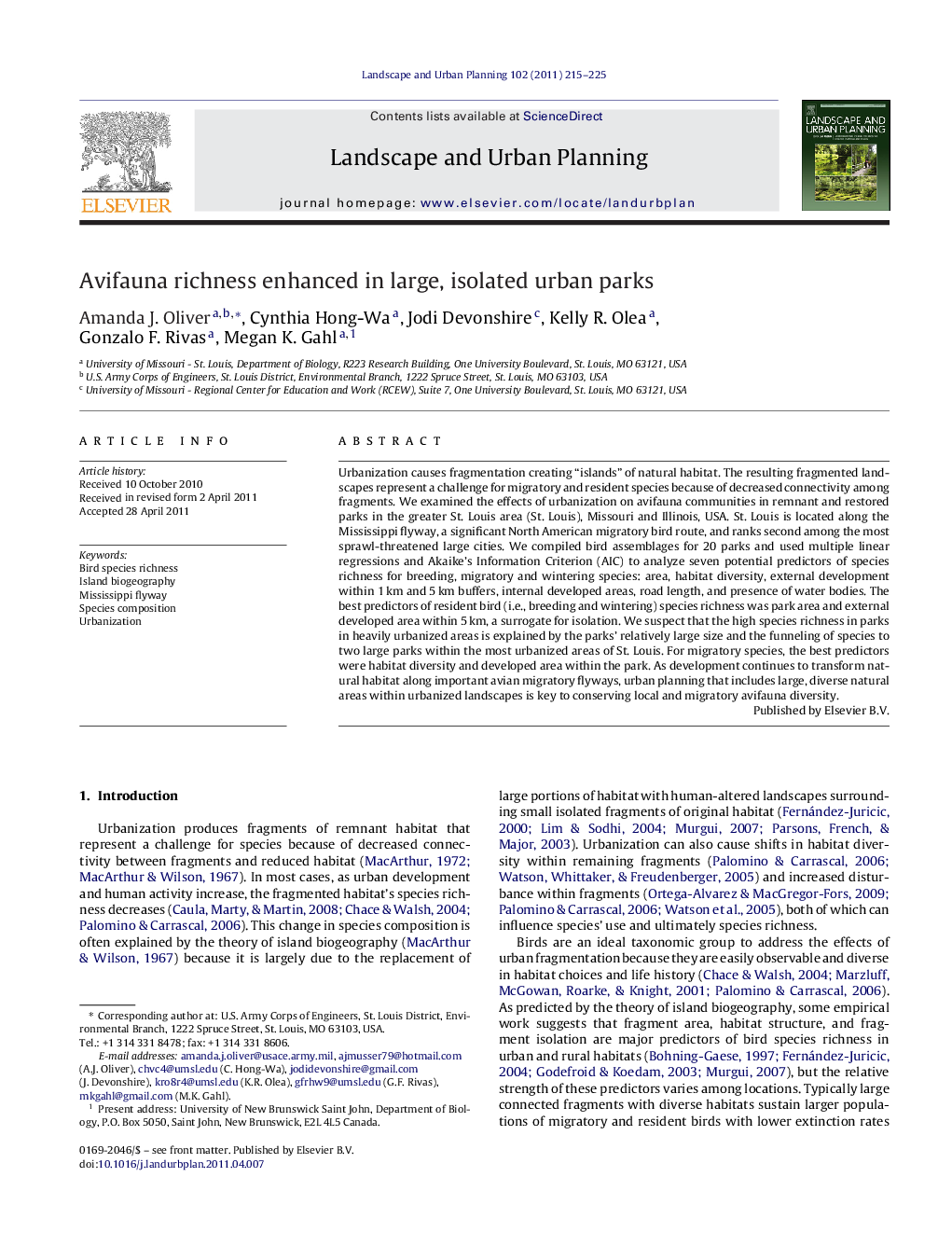| کد مقاله | کد نشریه | سال انتشار | مقاله انگلیسی | نسخه تمام متن |
|---|---|---|---|---|
| 1049707 | 945632 | 2011 | 11 صفحه PDF | دانلود رایگان |

Urbanization causes fragmentation creating “islands” of natural habitat. The resulting fragmented landscapes represent a challenge for migratory and resident species because of decreased connectivity among fragments. We examined the effects of urbanization on avifauna communities in remnant and restored parks in the greater St. Louis area (St. Louis), Missouri and Illinois, USA. St. Louis is located along the Mississippi flyway, a significant North American migratory bird route, and ranks second among the most sprawl-threatened large cities. We compiled bird assemblages for 20 parks and used multiple linear regressions and Akaike's Information Criterion (AIC) to analyze seven potential predictors of species richness for breeding, migratory and wintering species: area, habitat diversity, external development within 1 km and 5 km buffers, internal developed areas, road length, and presence of water bodies. The best predictors of resident bird (i.e., breeding and wintering) species richness was park area and external developed area within 5 km, a surrogate for isolation. We suspect that the high species richness in parks in heavily urbanized areas is explained by the parks’ relatively large size and the funneling of species to two large parks within the most urbanized areas of St. Louis. For migratory species, the best predictors were habitat diversity and developed area within the park. As development continues to transform natural habitat along important avian migratory flyways, urban planning that includes large, diverse natural areas within urbanized landscapes is key to conserving local and migratory avifauna diversity.
► Park area best predicted resident bird species richness in 20 parks in an urban matrix.
► Large parks with more external developed areas had higher resident bird species richness.
► Higher richness for migratory birds was driven by habitat diversity and development within parks.
► Urban landscape planning should include large, diverse natural areas to conserve birds.
Journal: Landscape and Urban Planning - Volume 102, Issue 4, 30 September 2011, Pages 215–225